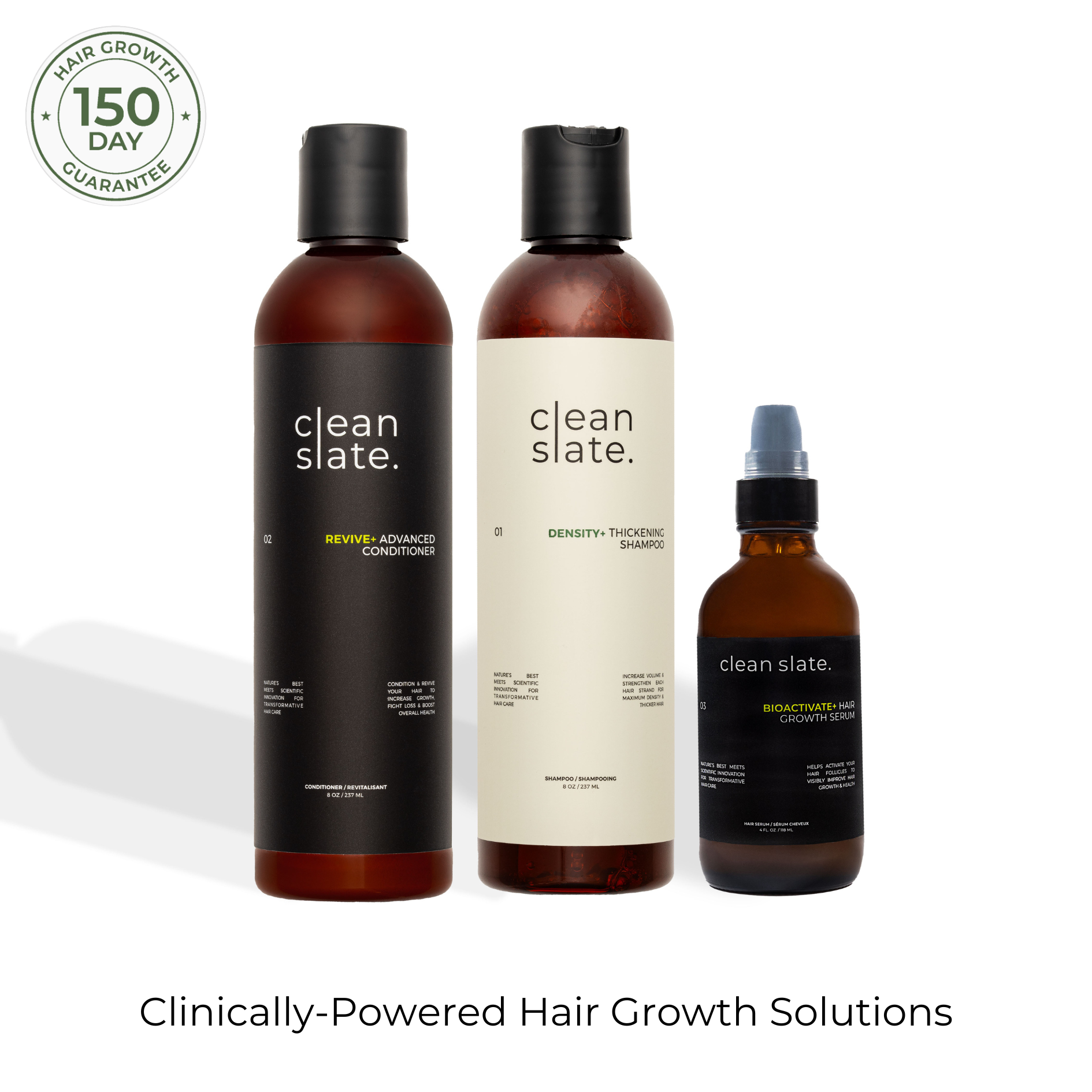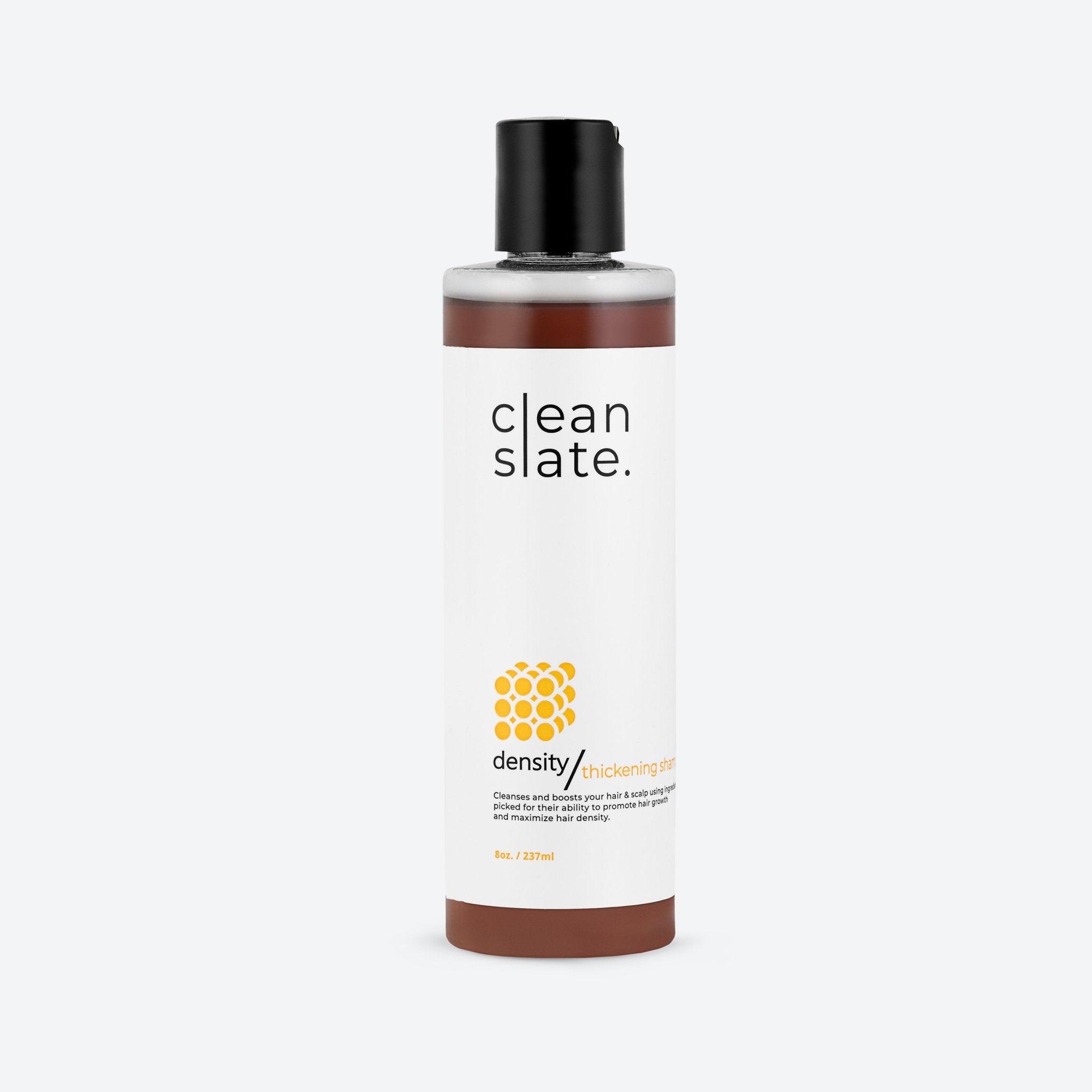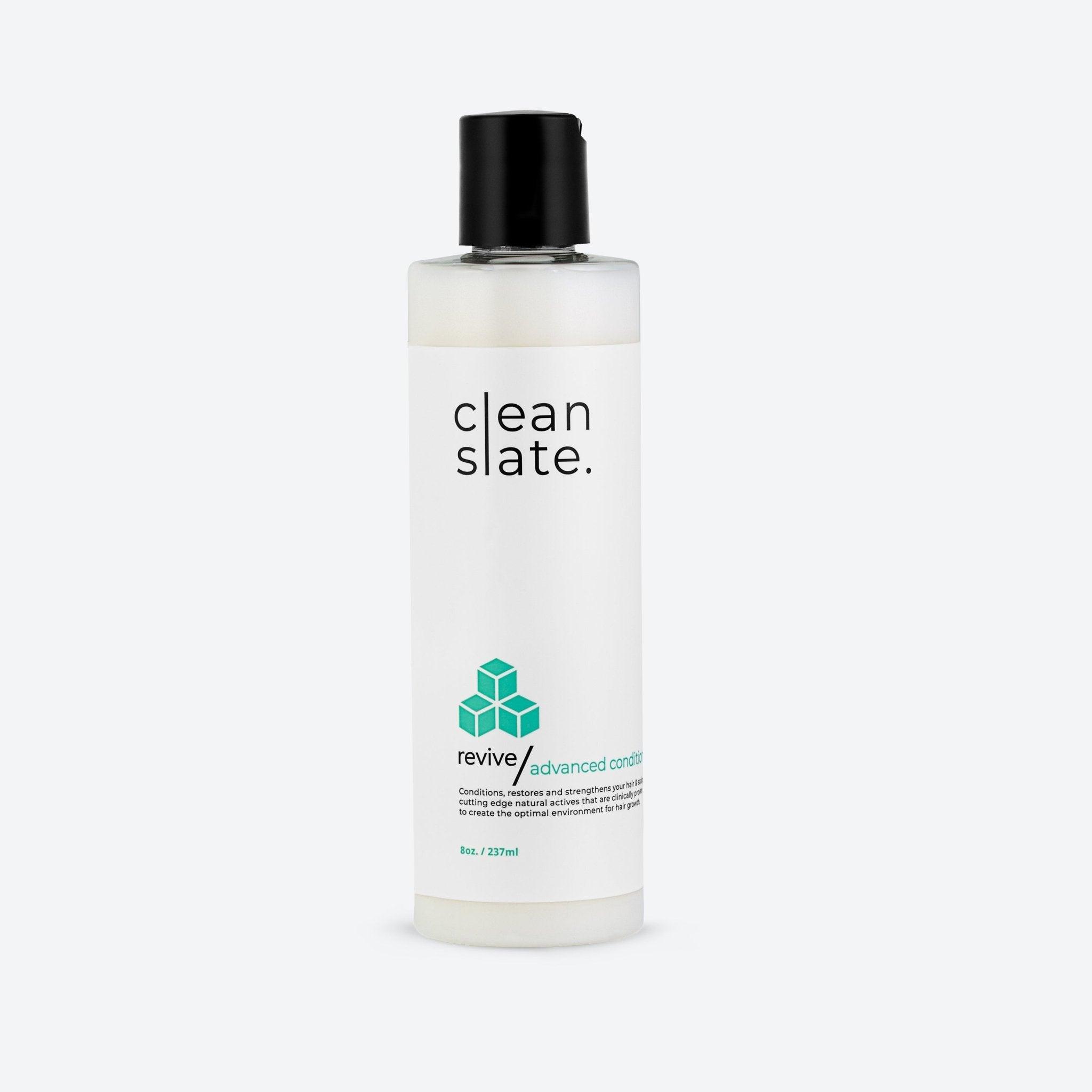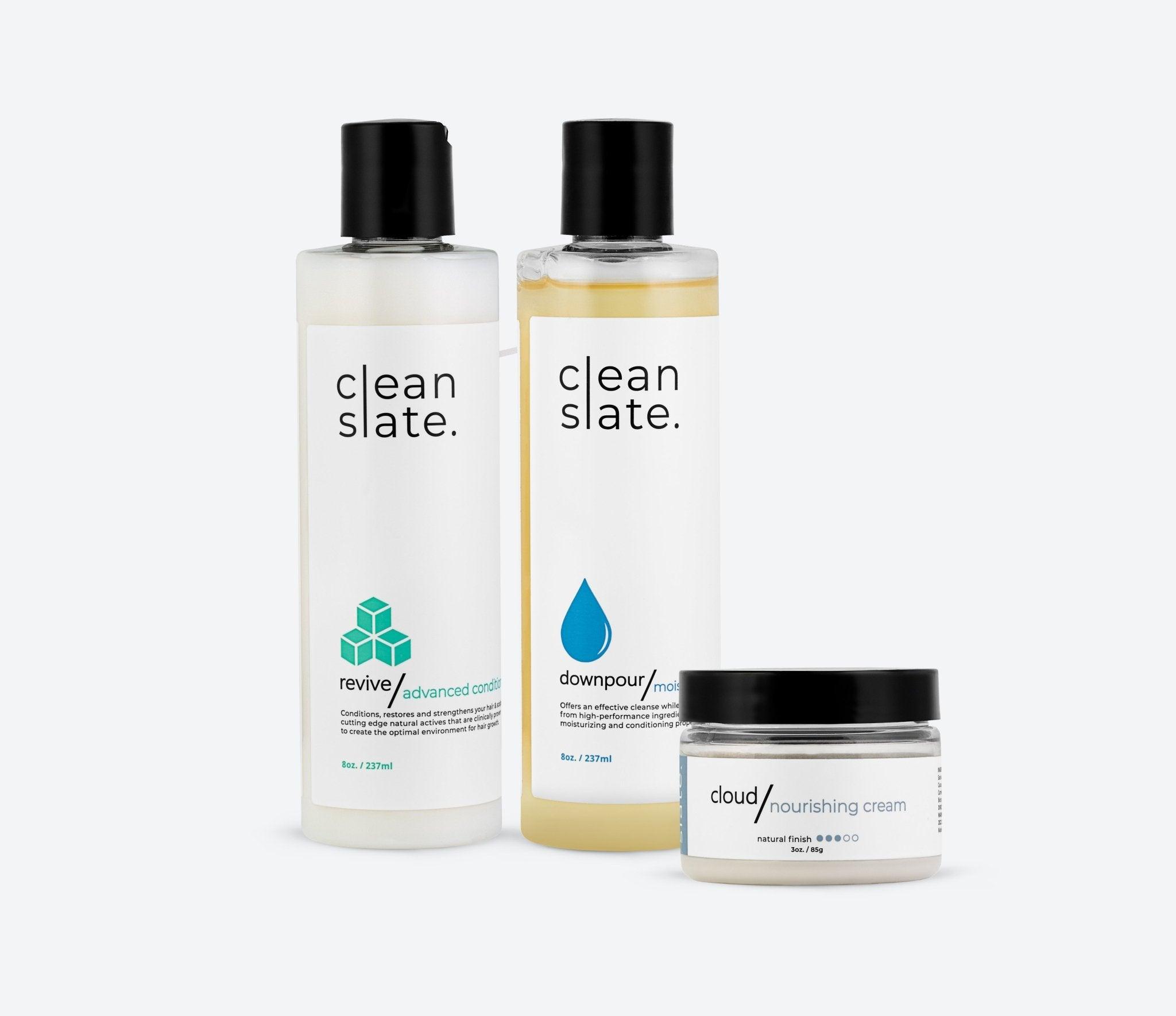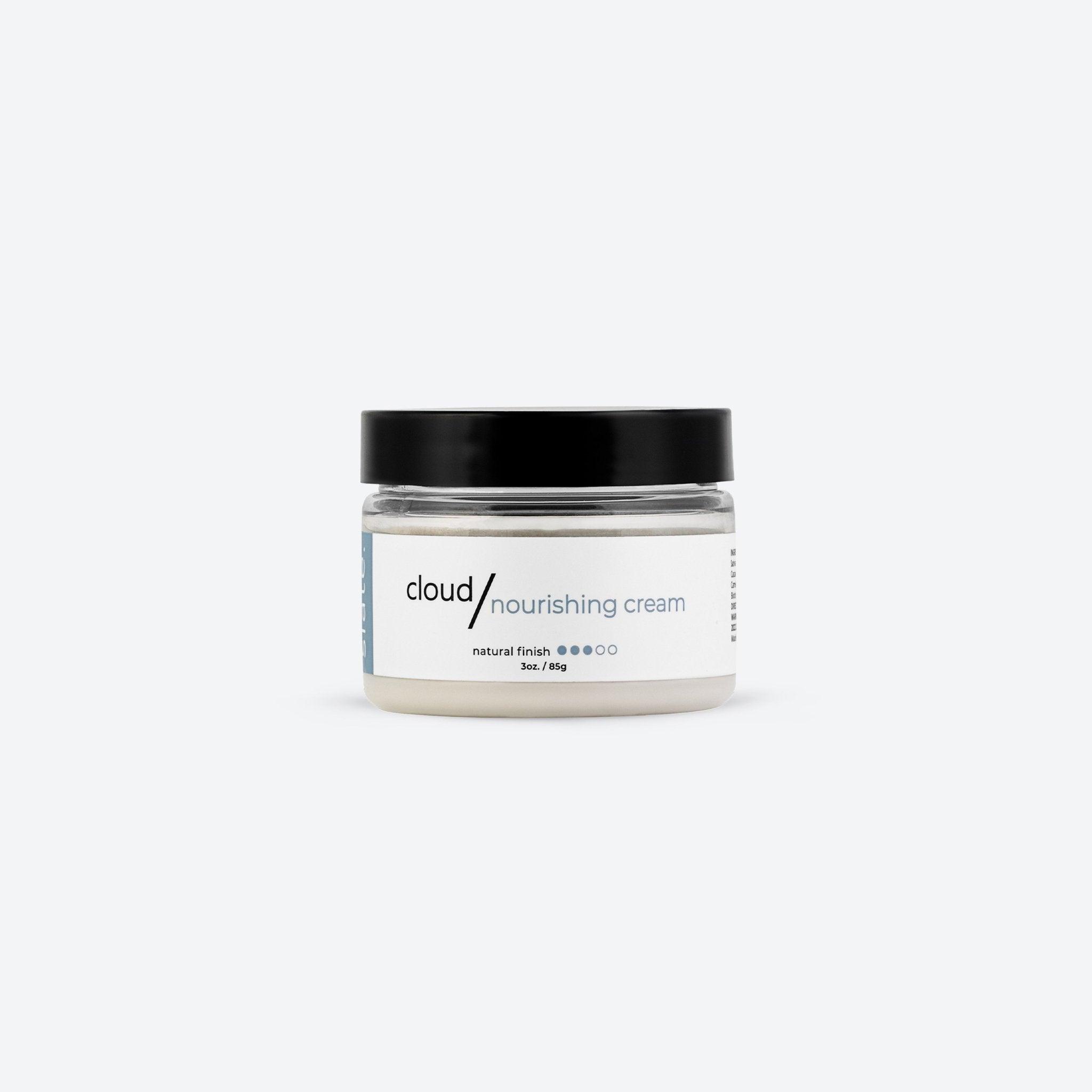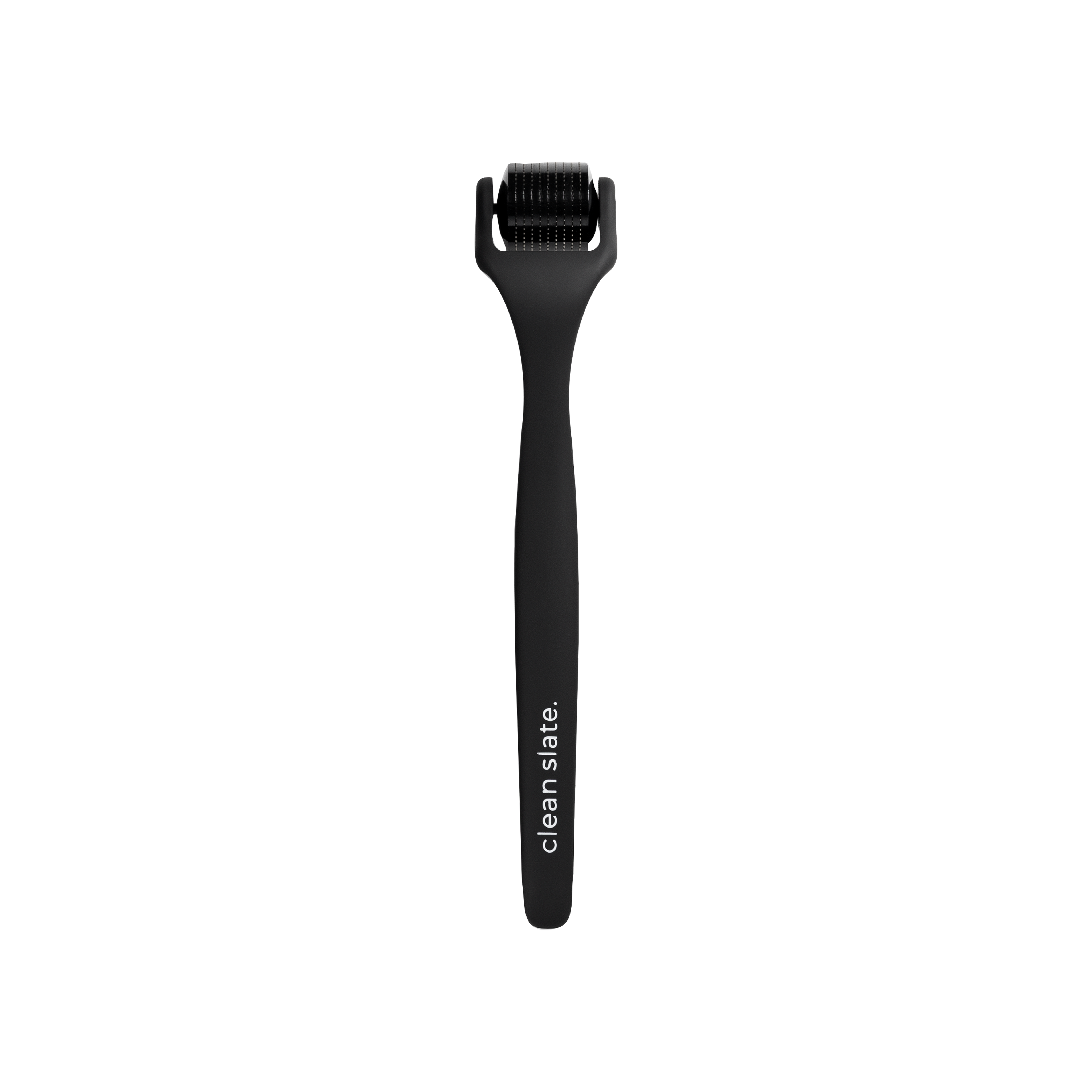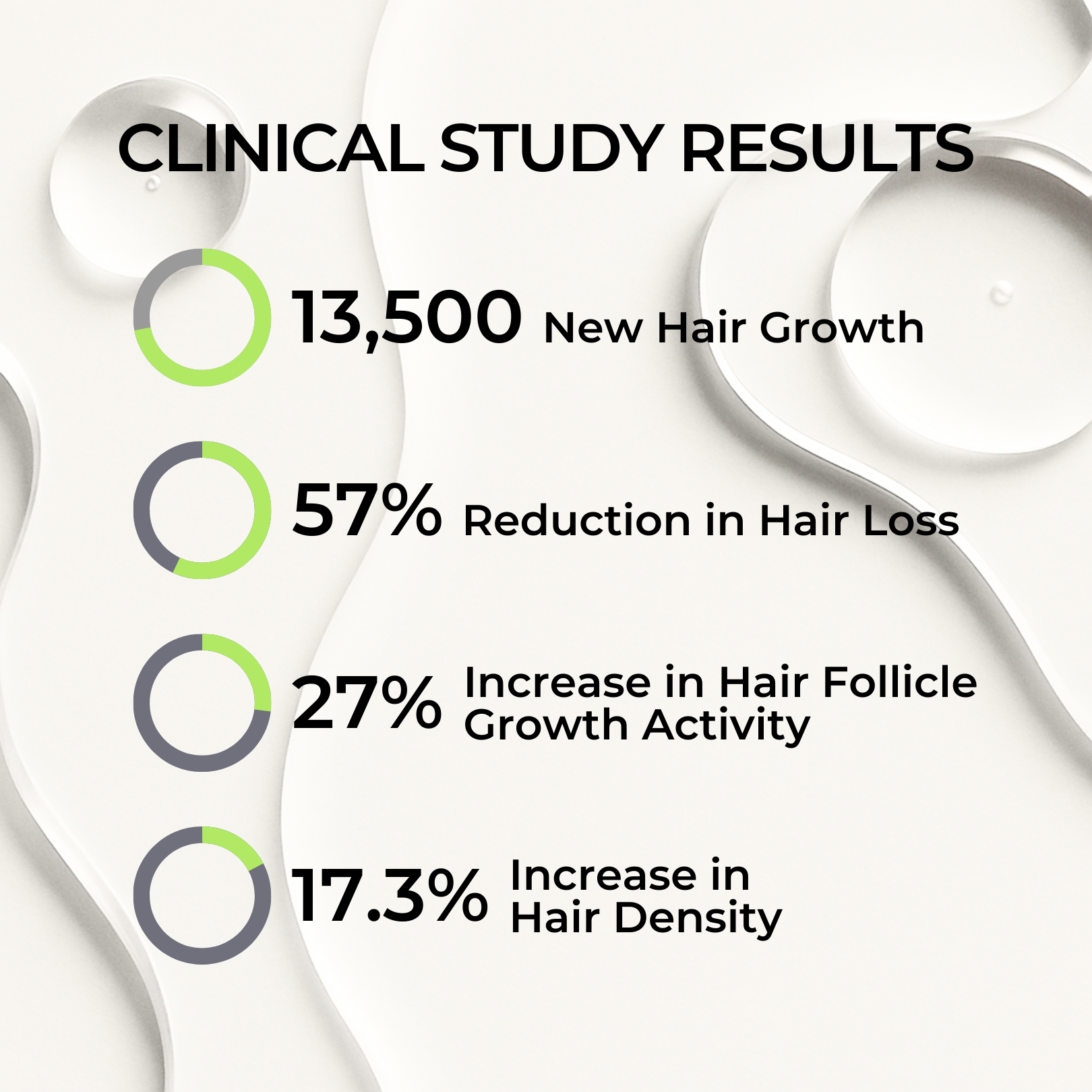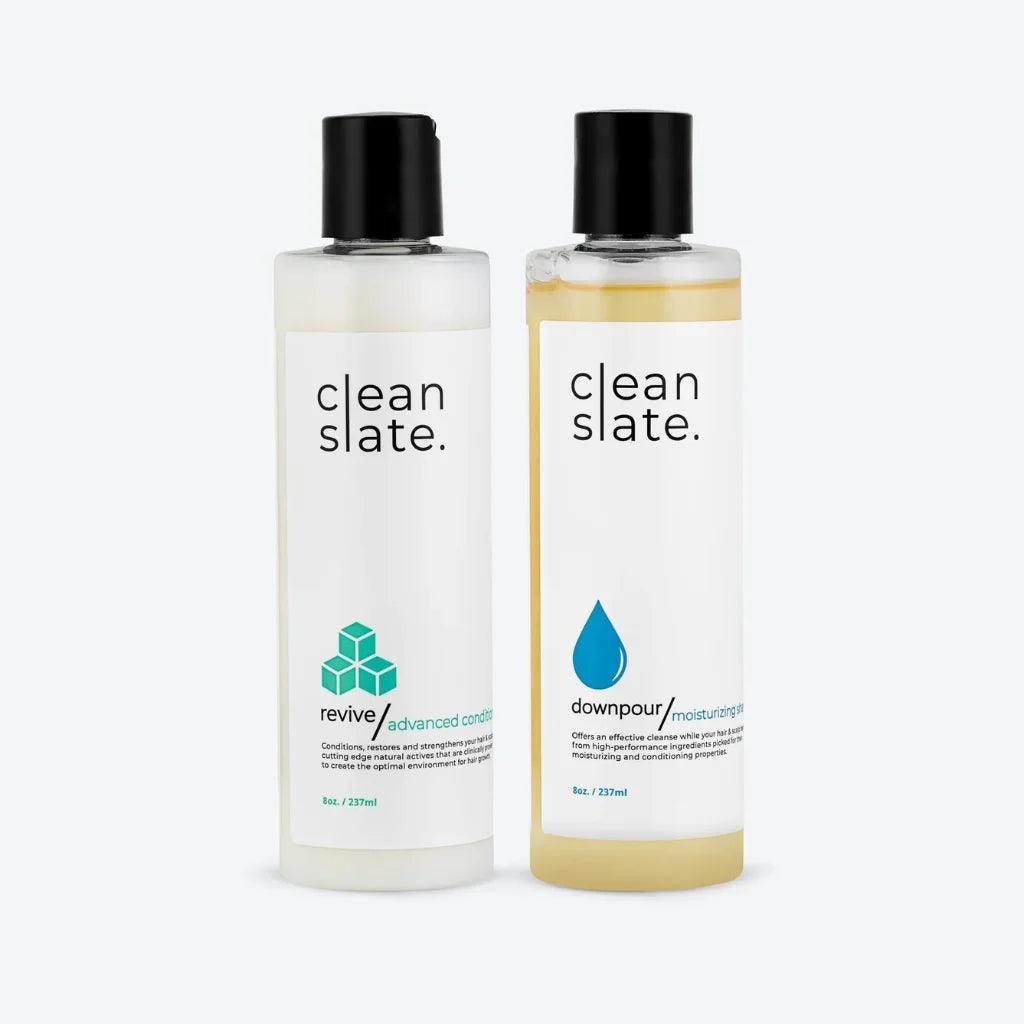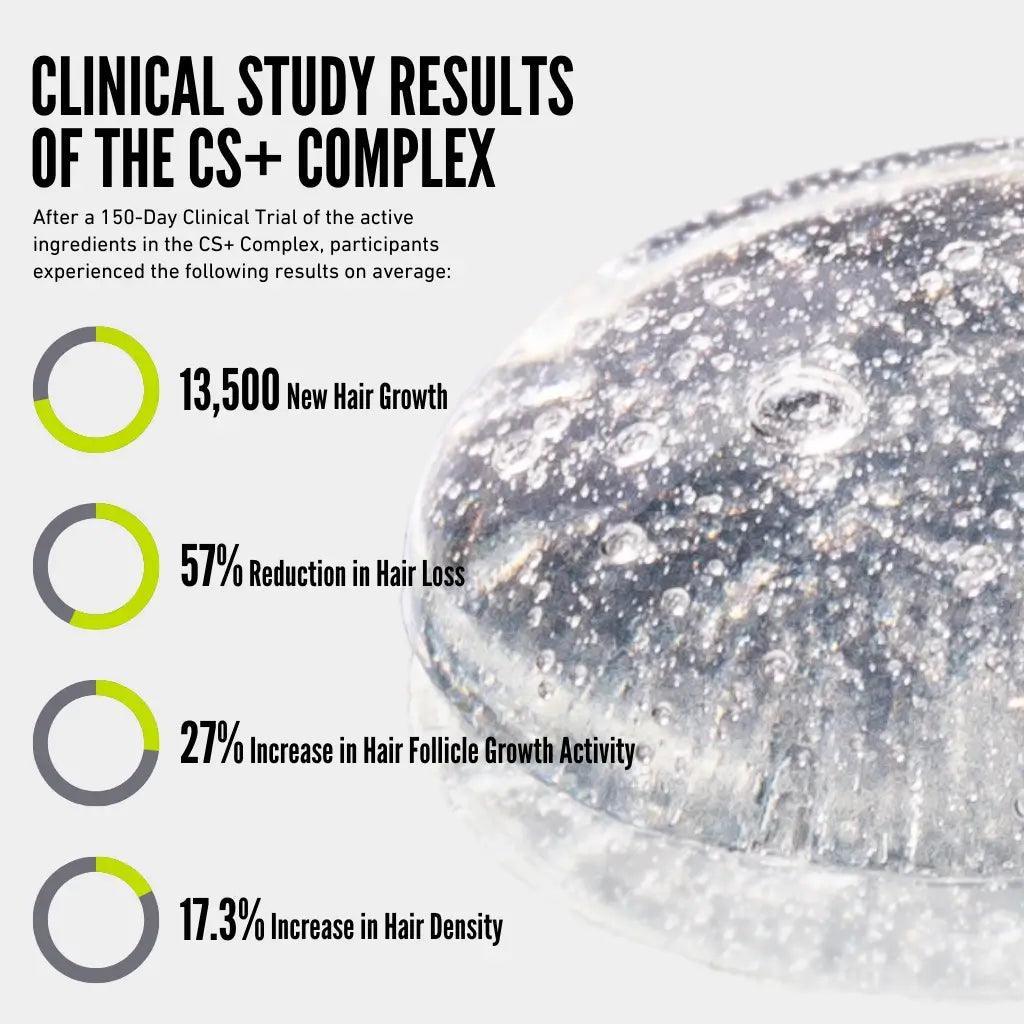5 Early Signs of Hair Loss (and How to Stop It Before It Gets Worse)

5 Early Signs of Hair Loss (and How to Stop It Before It Gets Worse)
Hair loss doesn't happen overnight—but the warning signs often do appear suddenly, catching you off guard when you finally notice them. The truth is, by the time most people recognize they're losing hair, the process has been underway for months or even years.
Here's the good news: catching hair loss early dramatically improves your chances of reversing it. Follicles that are weakening but still active can be saved and strengthened. Once they go fully dormant, recovery becomes exponentially harder.
If you're wondering whether what you're seeing is normal or the beginning of something more serious, here are five early warning signs—and exactly what to do if you recognize them.
Sign #1: Excessive Shedding
Let's start with the most common early indicator: noticing more hair than usual coming out during everyday activities.
What Normal Shedding Looks Like: Losing 50-100 hairs per day is completely normal. This is part of the natural hair growth cycle where follicles in the telogen (resting) phase shed to make room for new growth. You'll see a few strands in the shower, on your pillow, or in your brush—but nothing alarming.
What Excessive Shedding Looks Like:
- Clumps of hair circling the shower drain daily
- Multiple strands coming out every time you run your fingers through your hair
- Waking up to dozens of hairs on your pillow
- Your brush filling up faster than it used to
What's Happening Scientifically: Excessive shedding often signals that more follicles than normal are entering or stuck in the telogen phase prematurely. This can be triggered by stress, hormonal changes, nutritional deficiencies, or the beginning stages of pattern hair loss. The technical term for this process is follicle miniaturization—where active, healthy follicles gradually shrink and produce thinner, weaker hair before eventually going dormant.
If you're noticing this: Don't assume it's temporary or wait for it to resolve on its own. Excessive shedding that persists for more than 2-3 months is your scalp signaling that something has changed. The sooner you intervene with proven growth activators, the better your chances of keeping those follicles active and productive.
Noticing excessive shedding? This is the ideal time to start treatment—before thinning becomes visible. Clean Slate's BioActivate+ Serum targets the root causes of premature shedding by reducing inflammation and extending your hair's growth phase.
Sign #2: Thinning at the Crown or Part Line
This sign is often discovered by accident—catching your reflection in harsh lighting, or noticing your scalp more visible in photos than it used to be.
What to Look For:
- Your scalp showing through more prominently when your hair is wet or under bright lights
- A wider part line than you remember having
- Less density at the crown (the top/back area of your head)
- Feeling like you need to adjust your part or styling to cover areas that used to look full
What's Happening Scientifically: Thinning at the crown and along the part line indicates decreased follicular density in those areas. This typically results from DHT sensitivity—a hormone derivative that binds to follicles and gradually weakens them. As follicles miniaturize, they produce finer, shorter hairs that provide less coverage. The scalp becomes more visible not because you're losing huge amounts of hair all at once, but because the hairs growing are progressively thinner and weaker.
The crown and part line are particularly vulnerable because these areas have higher concentrations of DHT-sensitive follicles. For many people, these are the first places where density loss becomes noticeable.
If you're noticing this: Catching thinning at this stage means follicles are weakened but still producing hair. They haven't gone dormant yet. This is your window to strengthen those follicles, block DHT at the scalp level, and restore density before the loss becomes more pronounced. Waiting until you see significant balding makes recovery far more difficult.
Sign #3: Receding Hairline
A receding hairline is one of the most recognizable first signs of balding, yet it often progresses so gradually that people don't realize it's happening until the change is significant.
What to Look For:
- Your hairline moving backward at the temples, creating an "M" shape
- Increased forehead space compared to old photos
- Hair at the temples becoming finer and more transparent before receding entirely
- The subtle feeling that your hairstyle doesn't frame your face the way it used to
What's Happening Scientifically: The hairline recedes because follicles at the temples are among the most sensitive to DHT. As DHT binds to these follicles over time, they produce progressively shorter and finer hairs—a process called miniaturization. Eventually, those follicles stop producing visible hair altogether and go dormant.
This process happens in stages, often imperceptibly at first. You might notice the hair at your temples looks thinner or "wispy" before you realize the actual hairline has moved. This is the critical intervention window—when follicles are miniaturizing but not yet dormant.
If you're noticing this: A receding hairline rarely reverses on its own. In fact, without intervention, it will continue gradually progressing. The good news? Follicles in the early stages of recession can be reactivated and strengthened. The longer you wait, the more follicles transition from weakened to dormant—and dormant follicles are significantly harder to revive.
Seeing recession at your temples? Early-stage hairline loss responds exceptionally well to targeted treatment. Our BioActivate+ Formula delivers growth activators directly to vulnerable follicles, helping them resist DHT damage and maintain density.
Sign #4: Random Bald Patches
Unlike the gradual thinning of pattern hair loss, random bald patches appear suddenly—smooth, coin-sized areas where hair has fallen out completely.
What to Look For:
- Circular or oval patches of complete hair loss on the scalp
- Smooth skin in the affected area (no visible hair follicles)
- Patches that appear seemingly overnight or within days
- Sometimes accompanied by tingling or mild discomfort before the hair falls out
What's Happening Scientifically: Random bald patches are most commonly caused by alopecia areata—an autoimmune condition where your immune system mistakenly attacks hair follicles. Other triggers include extreme stress (telogen effluvium), nutritional deficiencies (particularly iron, biotin, or zinc), or fungal infections.
The critical distinction: unlike pattern hair loss caused by genetics and DHT sensitivity, patchy hair loss is often highly reversible—if addressed quickly. The follicles aren't permanently damaged; they're temporarily disrupted or suppressed.
If you're noticing this: Don't wait to see if it resolves on its own. Consult a dermatologist or trichologist to identify the underlying cause. In many cases, addressing the trigger (stress management, nutritional supplementation, topical treatments for inflammation) allows the follicles to recover and resume normal growth within months. The faster you intervene, the better your chances of complete regrowth.
Even while working with a medical professional, supporting your scalp with anti-inflammatory growth activators can accelerate recovery and prevent additional patches from forming.
Sign #5: Slower Regrowth and Finer Hair Texture
This is one of the subtlest early signs—and one of the most telling. You might not notice dramatic shedding or visible thinning, but something feels off about your hair's quality and behavior.
What to Look For:
- Hair taking longer to grow back after a haircut
- New growth coming in noticeably finer or more transparent than before
- Hair that used to be thick and coarse now feeling softer, limper, or "baby-like"
- Styles that used to hold well now falling flat or looking sparse
- Overall hair that lacks the body and fullness it once had
What's Happening Scientifically: This change indicates that your follicles' anagen phase (active growth phase) is shortening, while the hairs they produce are becoming progressively weaker. This is follicle miniaturization in action—the same process behind all pattern hair loss.
Healthy follicles produce thick, pigmented hairs that grow for 2-7 years before shedding. As miniaturization progresses, the growth phase shortens (sometimes to just months), and the hair shaft diameter decreases. The result: shorter, finer hairs that contribute less to overall density and coverage.
Many people dismiss this change as "aging" or "hormones," which isn't entirely wrong—but it's also not inevitable or irreversible. This textural change is an early biological signal that follicles are weakening and need support.
If you're noticing this: Finer regrowth means follicles are still active—they're just not performing optimally. This is actually an ideal stage for intervention because you're catching the problem before significant visible thinning occurs. Strengthening these follicles now prevents them from progressing to dormancy, preserving your density long-term.
Why Early Intervention Matters More Than You Think
Here's the reality that the hair loss industry doesn't always communicate clearly: follicles have a limited window of reversibility.
When follicles are actively producing hair—even if that hair is thin, fine, or shedding prematurely—they can be saved, strengthened, and optimized. The biological machinery is still functioning; it just needs the right support to return to healthy performance.
But once follicles go fully dormant and stop producing hair altogether, recovery becomes exponentially more difficult. Dormant follicles can sometimes be reactivated, but it requires more aggressive intervention, takes significantly longer, and success rates drop considerably.
The critical insight: Every month you wait after noticing early signs is a month where more follicles transition from "struggling but active" to "dormant and difficult to revive."
Early intervention doesn't just stop hair loss—it preserves the follicles you still have, giving you far better baseline density to work from. Starting treatment when you first notice excessive shedding or thinning at the crown is fundamentally different (and far more effective) than starting after years of progressive loss.
Think of it like this: it's easier to maintain a healthy garden than to revive a barren one. Your follicles are the same way.
A Proven Solution Without Harsh Drugs
If you've recognized any of these early warning signs, you're probably wondering: what actually works to stop this progression?
The conventional answer has been Minoxidil (Rogaine) or finasteride (Propecia)—drugs with proven track records but also significant downsides. Minoxidil requires permanent daily use and often causes scalp irritation. Finasteride blocks DHT systemically, which can lead to unwanted side effects that many people aren't willing to accept.
There's a better path forward.
At Clean Slate Care, we've developed the BioActivate+ Hair Growth System specifically for people who want clinical-grade results without pharmaceutical side effects. Our approach targets the root causes of early hair loss—inflammation, follicle miniaturization, and DHT sensitivity—using advanced growth activators backed by peer-reviewed research.
The CS+ Complex: Precision Targeting for Early Intervention
Our formula combines two clinically studied ingredients proven to strengthen weakening follicles and prevent progression:
Capilia Longa™: A patented turmeric extract that reduces inflammation at the follicular level. Chronic scalp inflammation is one of the primary drivers that push healthy follicles into premature resting phases. By targeting inflammatory pathways, Capilia Longa™ extends the growth phase and creates optimal conditions for follicles to thrive. Clinical studies demonstrate a 78% reduction in hair loss and 89% improvement in density after 150 days.
Elaya Renova™: A bioengineered peptide complex that strengthens hair shafts and reactivates dormant follicular stem cells. It increases keratin production—the structural protein that makes up hair—while signaling weakened follicles to resume normal growth cycles. Research shows it increases hair density by 12% and reduces shedding by 54% with consistent use.
Natural DHT Blockers: Our formula also includes plant-based compounds that inhibit DHT at the scalp level without the systemic hormone disruption of oral medications. This means you get the protective benefits against DHT-driven miniaturization without the side effects.
Clinical Results That Speak for Themselves
In controlled studies of our BioActivate+ Formula over 150 days, participants experienced:
- 13,500 new hairs on average—measurable density restoration in areas experiencing early thinning
- 57% reduction in hair loss—dramatically fewer hairs shed during daily activities
- Visible improvements in 89% of participants—real people seeing real results
- Zero reported side effects—none of the scalp irritation, unwanted hair growth, or systemic concerns associated with conventional treatments
These results aren't accidents—they're what happens when you give struggling follicles the precise growth activators they need during that critical window of reversibility.
The 150-Day Guarantee: Risk-Free Confidence
We know the timeline for real hair growth: 150 days is when follicles that were saved and strengthened produce measurable, visible results. That's why every purchase is backed by our 150-Day Money-Back Guarantee.
If you don't see reduced shedding, improved density, and stronger regrowth after following the protocol, we refund every penny. No complicated hoops to jump through. We simply believe in the science—and we know that early intervention works when you use clinically proven growth activators consistently.
Ready to stop hair loss before it gets worse? Start with our BioActivate+ Hair Growth Serum—the cornerstone of early intervention that targets weakening follicles right now, before they go dormant.
For comprehensive results, explore our complete Hair Growth System—serum, shampoo, conditioner, and derma roller working together to optimize every factor in your hair's growth environment.
Frequently Asked Questions
How can you tell if hair loss is temporary or permanent?
Temporary hair loss (telogen effluvium) typically follows a specific trigger—severe stress, illness, surgery, nutritional deficiency, or hormonal change—and begins 2-3 months after that event. It often involves diffuse thinning across the entire scalp rather than pattern-specific loss. Most importantly, temporary hair loss resolves on its own within 6-9 months once the trigger is addressed.
Permanent hair loss (androgenetic alopecia or pattern hair loss) follows predictable patterns: thinning at the crown, receding at the temples, or widening part lines. It progresses gradually over months and years, and it won't resolve without intervention. However, "permanent" doesn't mean irreversible—it means the condition is ongoing and requires treatment to halt and reverse.
If you're unsure, track your shedding and thinning patterns over 2-3 months. If it's worsening or following a pattern (crown, temples, part line), assume it requires intervention rather than waiting to see if it stops on its own.
What age does hair loss usually start?
Hair loss can begin as early as the late teens or early twenties, though most people notice first signs of balding in their 30s or 40s. Genetics play the dominant role in timing—if your parents experienced early hair loss, you're more likely to as well.
The key insight: age of onset doesn't determine severity or reversibility. Someone who notices thinning at 25 and intervenes immediately will have far better outcomes than someone who waits until 35 to address obvious loss. Early intervention always produces better results, regardless of when you first notice the signs.
Does early hair loss always mean balding?
Not always, but it requires investigation. Early hair loss can be caused by:
- Pattern hair loss (androgenetic alopecia): Genetic, progressive, requires ongoing treatment
- Telogen effluvium: Temporary, stress or trigger-related, often self-resolving
- Nutritional deficiencies: Reversible with supplementation and dietary changes
- Alopecia areata: Autoimmune, patchy, often reversible with treatment
- Hormonal imbalances: Thyroid issues, PCOS, postpartum changes—reversible when addressed
The safest approach? Don't assume it's temporary. If you're noticing any of the five signs in this article for more than 2-3 months, treat it as something that requires intervention. Even if it turns out to be temporary, supporting your follicles during that period prevents additional damage and accelerates recovery.
Don't Wait Until It's Obvious
The biggest mistake people make with hair loss isn't choosing the wrong treatment—it's waiting too long to start any treatment at all.
Every early sign you've read about in this article represents follicles that are struggling but still saveable. The excessive shedding, the thinning crown, the subtle recession, the finer regrowth—these are biological signals that your hair needs support right now, while those follicles are still active.
The longer you wait, the smaller that window of opportunity becomes.
Catch hair loss early. Start treatment today with Clean Slate's BioActivate+ Serum and our 150-Day Guarantee.
You have nothing to lose—and everything to save. Your follicles are counting on you to act while they still can be rescued.


